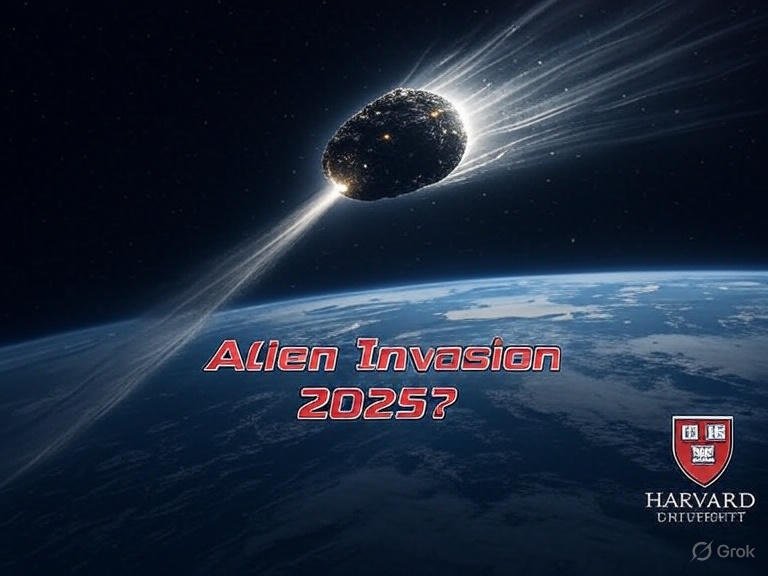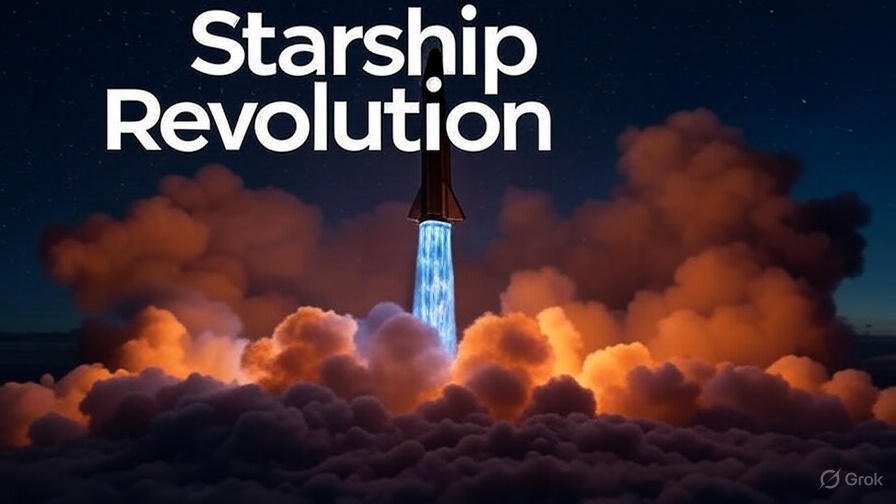Cosmic Caution: Unraveling the 2025 Alien Threat Speculation Surrounding Interstellar Object 3I/ATLAS

In the summer of 2025, a cosmic mystery has ignited global curiosity and concern: could an interstellar object named 3I/ATLAS, hurtling through our solar system, be a hostile spacecraft set to confront Earth in November 2025? Harvard astrophysicist Avi Loeb, known for provocative theories about extraterrestrial life, has fueled this speculation with a controversial paper suggesting that 3I/ATLAS might not be a natural comet but an alien probe with strategic intent. While most scientists dismiss this as unlikely, the claim has sparked a whirlwind of debate, blending rigorous astronomy with public fascination about alien threats. This article delves into the science behind 3I/ATLAS, the public’s varied reactions, and what this moment reveals about humanity’s readiness to face the unknown, drawing from scientific insights and cultural perspectives in a year poised on the edge of cosmic discovery.
The Discovery of 3I/ATLAS: A Cosmic Intruder
On July 2, 2025, the NASA-funded ATLAS telescope in Chile detected a fast-moving object, initially dubbed A11pl3Z, later confirmed as 3I/ATLAS, the third known interstellar object to visit our solar system. Unlike typical comets or asteroids bound to the Sun’s gravity, 3I/ATLAS follows a hyperbolic orbit, moving at approximately 60 kilometers per second, suggesting it originated beyond our stellar neighborhood. Estimated at 7–15 miles wide, it’s larger than its predecessors, ‘Oumuamua (2017) and 2I/Borisov (2018), and displays a faint coma and tail, indicating cometary activity.
Avi Loeb, alongside researchers Adam Hibberd and Adam Crowl from the Initiative for Interstellar Studies, noted anomalies in 3I/ATLAS’s trajectory and brightness. In a pre-peer-reviewed paper published on arXiv on July 22, 2024, Loeb argued its retrograde orbit and size—unusually large for an interstellar asteroid—could imply an artificial origin. He calculated a 0.005% probability of its close approaches to Venus, Mars, and Jupiter being random, hinting at deliberate navigation.
Avi Loeb’s Controversial Hypothesis
Avi Loeb is no stranger to bold claims. In 2018, he proposed that ‘Oumuamua, the first interstellar object, might be an alien probe due to its non-gravitational acceleration. With 3I/ATLAS, Loeb escalates this speculation, suggesting it could be a hostile spacecraft preparing for an encounter in November 2025, when it reaches perihelion (closest point to the Sun) on October 29, hidden from Earth’s view. He cites its lack of typical cometary volatiles and reflective surface as potential signs of technology, aligning with the “Dark Forest” hypothesis, where advanced civilizations might view others as threats.
The scientific community has largely criticized Loeb’s claims as speculative. NASA’s Near-Earth Object Program and experts like Richard Moissl from the European Space Agency assert 3I/ATLAS is a natural comet, showing a coma and tentative tail. Critics, including those cited by Live Science, call the paper “nonsense,” noting its lack of peer review and reliance on unverified assumptions. Loeb himself acknowledges the likelihood of a natural origin but argues that exploring the alien threat hypothesis is a necessary exercise to prepare for rare possibilities.
The Science Behind 3I/ATLAS
To understand the alien threat speculation, we must first grasp 3I/ATLAS’s characteristics. Its hyperbolic orbit, with an eccentricity of 6.2, confirms its interstellar origin, as objects with eccentricity above 1 escape the Sun’s gravitational pull. Traveling at 130,000 mph, it’s faster than ‘Oumuamua and 2I/Borisov, and its size—potentially 20 kilometers—makes it the largest interstellar visitor observed. Observations from the Gemini North and Hubble telescopes reveal a “puffy” coma, typical of comets, though Loeb questions the absence of carbon-based molecules.
3I/ATLAS will pass within 18 million miles of Mars on October 2, 2025, and reach perihelion on October 29, 2025, at 130 million miles from the Sun. Its closest approach to Earth, 150 million miles in December 2025, poses no collision risk, as confirmed by NASA. The object’s trajectory, passing close to Venus, Mars, and Jupiter, is statistically rare, but natural comets can exhibit such paths due to gravitational influences.
Public Reactions: Fascination and Skepticism
The hostile spacecraft claim has captivated public imagination, amplified by sensational headlines and social media. Posts on X reflect a mix of intrigue, humor, and skepticism. Some users, like warfrontobservr, echoed Loeb’s warnings, while others in r/UFOs on Reddit dismissed the idea, joking about the object’s “slow ass spaceship” or questioning why aliens would wait to attack. Community notes on X clarified that 3I/ATLAS is a comet posing no threat, countering “fearmongering.”
Historical parallels, like the 1938 War of the Worlds radio panic, highlight humanity’s fascination with alien threats. Loeb’s hypothesis taps into this cultural zeitgeist, where UAP (unidentified aerial phenomena) discussions are mainstream. However, many X users argue that advanced aliens, if hostile, could have attacked earlier, given humanity’s lack of defenses against technologies like atom-dissociating weapons. The public’s response underscores a tension between curiosity about extraterrestrial life and demand for evidence.
Implications for Humanity’s Preparedness
Loeb’s paper, though speculative, raises critical questions about humanity’s readiness for an alien threat. If 3I/ATLAS were a hostile spacecraft, our current technology—reliant on chemical rockets—couldn’t intercept it, as Loeb notes its 98 km/s velocity gap at perihelion. The object’s November 2025 solar alignment, obscured from Earth, adds a theoretical challenge for monitoring potential maneuvers.
Globally, no formal protocols exist for responding to extraterrestrial contact, hostile or otherwise. NASA’s Planetary Defense Coordination Office tracks near-Earth objects but lacks mechanisms for artificial threats. Loeb advocates for enhanced observation, proposing the James Webb Space Telescope to search for non-gravitational acceleration, a sign of propulsion. His Galileo Project aims to collect data on UAP and interstellar objects, urging international cooperation to address existential risks.
Scientific Skepticism and the Need for Evidence
The 3I/ATLAS debate highlights the scientific method’s emphasis on evidence. Critics argue Loeb’s claims lack substantiation, as telescopes can’t discern intent, and 3I/ATLAS’s cometary features align with natural phenomena. The paper’s pre-peer-reviewed status invites scrutiny, with experts like Jonathan McDowell noting its “fuzziness” suggests ice, not technology. NASA’s ongoing observations, including Hubble data from July 21, 2025, aim to clarify its nature.
Despite skepticism, Loeb’s work encourages open-minded inquiry. He argues that even a 1-in-50 chance of an artificial object warrants investigation, given the stakes. The Vera C. Rubin Observatory, set to detect thousands of interstellar objects in the coming decade, could provide more data, potentially resolving such mysteries.
Cultural Context: Why Now?
The alien threat speculation emerges amid heightened UAP interest, fueled by government reports and congressional hearings. Posts on X link Loeb’s claims to broader narratives, including unfounded connections to political events, reflecting a polarized cultural landscape. The timing—July 2025, with 3I/ATLAS’s perihelion looming—amplifies public engagement, reminiscent of Cold War-era space anxieties.
This moment also reflects humanity’s existential curiosity. As we probe exoplanets and search for life, interstellar objects like 3I/ATLAS offer tangible links to other star systems. Whether a comet or a probe, its study could yield insights into planetary formation or, in the rarest case, alien technology, shaping our cosmic perspective.
Preparing for the Unknown
The November 2025 speculation, while unlikely, prompts reflection on humanity’s preparedness. Should 3I/ATLAS prove natural, it will enrich our understanding of interstellar comets. If artificial, it could redefine our place in the cosmos. Developing protocols for contact, investing in space telescopes, and fostering global cooperation are steps toward readiness, regardless of the outcome.
As Harvard astrophysicists like Avi Loeb push boundaries, they remind us to question assumptions and embrace the unknown. The 3I/ATLAS saga, whether a scientific footnote or a historic turning point, underscores the thrill and challenge of exploring the universe. Stay tuned for updates, share your thoughts below, and explore more science content on Mehena to fuel your cosmic curiosity!





